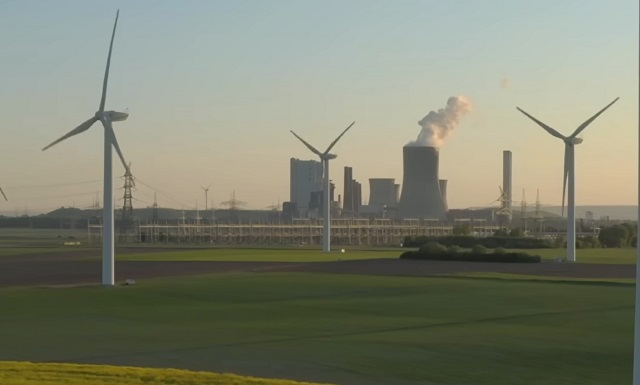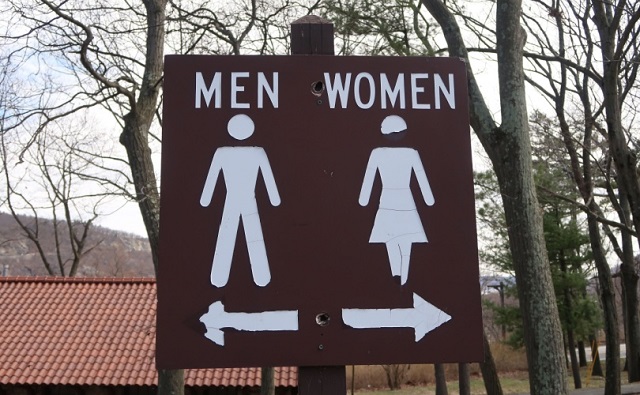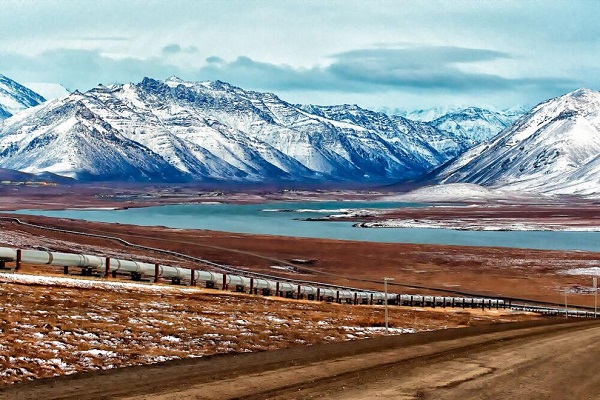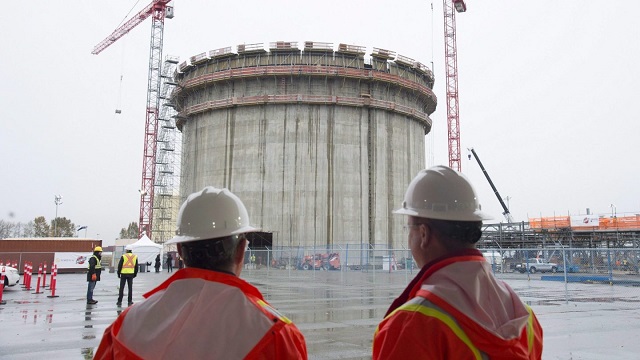Energy
Canada creates a brand new fossil fuel subsidy – Awkward: Etam

From the Frontier Centre for Public Policy
By Terry Etam
Upon hearing about the federal government’s decision to roll back the carbon tax on heating oil, I rolled up my sleeves. The point of writing about energy at all is to try to illuminate some aspect of an energy topic from a viewpoint inside the energy sector; to explain some energy nuance that the general population, which cares little for the nuances of energy, may find valuable. Energy is not simple, and there are a lot of loud storytellers out there, selling magical beans and wishful thinking.
To me, the carbon tax rollback was an annoyingly flagrant bit of vote-buying, yet another irritant from the federal government but one that, on centre-stage, seemed to have far less potential for cross-country histrionics than, for example, the time the prime minister threw his talented and principled First Nations minister under the bus. Now that was a shockwave.
This carbon tax vote grab? Ha. SNC Lavalin, Jody Wilson-Raybould, the WE Charity scandal, foreign interference… a heating oil subsidy doesn’t even crack an annual top-ten list of federal governance dirty diapers.
Or so I thought. Hoo boy. The Hail Mary scheme has blown up, blown up real good. Critics are everywhere, from across the political and environmental spectrum. Liberal heavyweights are attacking Trudeau; economists that love the carbon tax for its ‘efficiency’ are declaring the carbon tax dead. Incredulously, premiers have voiced a unanimous opinion that the entire country needs to be treated consistently.
Upon further thought, it shouldn’t be a big surprise that even the hard core climate crowd is displeased. The federal government has been lavish with announcements and proclamations about eliminating fossil fuel subsidies, that they would do so faster than imaginable, that, well, read their words for yourself: “Canada is the only G20 country to phase out inefficient fossil fuel subsidies ahead of the 2025 deadline. We are the first country to release a rigorous analytical guide that both fulfills our commitment and transparently supports action.”
“What the hell is this?” appears to be the consensus among a disparate group of voices that reaches consensus on nothing.
Be very clear why there is outrage: this is a shallow, obvious vote grab that crumbles the pillars of this government, and it most definitely is a creation of a brand new fossil fuel subsidy – so much for international credibility after all the hectoring this government has done globally. (If you have any doubts that this is anything but a political maneuver, consider that almost exactly a year before, in October 2022, the Conservatives tried to pass a motion to exempt home heating oil from the carbon tax, and all Liberal MPs save one brave Newfoundlander voted against it.)
Since the whole topic of the carbon tax has now come up though, here is a critical point that warrants some thought.
Canada and the US have chosen two different strategies to reduce emissions. Canada has, of course, the carbon tax – if you use or burn hydrocarbons, you’re going to pay (certain rural maritimers temporarily notwithstanding). Governmental, and government friendly, economists contort themselves into pretzels to demonstrate that the rebates handed back by the federal government “more than compensate” for the carbon tax, but every citizen that goes to a grocery store and realizes that every item in the industrial chain that handled any of those products in this country paid their own carbon tax, and that all that is rolled into the end product, has a very strong real-world suspicion that the government’s equation is laughable.
Beyond that, there is a big problem with Canada’s ‘stick’ approach to carbon reduction. Canadians can choose to limit the impact of the carbon tax by switching to something less carbon intensive, or spending to otherwise limit emissions. You don’t want to pay the carbon tax, you or your business? “No problem!” Says the federal government; just spend some exorbitant amount of capital, based on frameworks and guidelines that are not yet even ready.
In the US, the government long ago (2008) introduced something called 45Q, a carbon credit which was recently beefed up significantly under the Biden Inflation Reduction Act energy policy. 45Q is a carrot. If you are a carbon emitter, well, no one likes the emissions, but go ahead and carry on with your business.
If you choose to reduce your carbon emissions however, the government will hand you a cheque (sorry, check) for doing so – $85 per tonne CO2e, to be precise. You can start a new business that generates emissions credits, and if you can do it for less than $85/tonne, you have a new profit centre. There is a companion credit called 45X; credit revenue can be generated from it by manufacturing components that go into various energy technologies including structural fasteners, steel tubing, critical minerals, pretty much any battery component, etc.
In short, an existing business can carry on as before, or embark on a new venture with a guaranteed revenue stream from carbon credits generated.
In Canada, the stick is, like, really big, and for real. If you exist and consume conventional energy, you will pay, and pay dearly, and the amount will go up every year until either 2030 or until you cry uncle, whichever comes first.
Want to avoid paying the tax? Again, you will pay dearly, but differently; you will pay for capital expenditures on whatever means are available to you, using whatever policies are worked out by governments at all levels (Not a secret: a great many of the regulatory bugs are not yet worked as to potential solutions to limit emissions, capture/store carbon, etc.).
In Canada, either way, you pay through the nose. In the US, you have options to go into another line of business, or to find potentially unrelated ways to reduce emissions, with a ‘guaranteed revenue stream’ in the form of credits.
Guess in which direction businesses will thunder?
Economists love Canada’s carbon tax because it is ‘efficient’. Well, yes, that is true in an oddball sort of way, just as I can guarantee you that I can ‘efficiently’ reduce local vehicular traffic by blowing up every bridge and overpass. How’s that for efficient? I could cut traffic levels by greater than 50 percent within hours of delivery of the ACME Dynamite.
At the end of the day, the federal government’s backpedaling on the carbon tax is symptomatic of a cornerstone of the entire movement failing, because it was made of styrofoam and the building upon which it was constructed will only work with carefully engineered cement.
Europe is no different, celebrating emissions reduction successes while not wanting to talk much about how the industrial sector has been hollowed out. “Stick” taxes force companies to shut down and/or leave, and just plain punish citizens for things like heating their homes.
The carbon tax is a solution to the extent that there is readily-trimmable fat in the system. But it has to be designed to go after that fat, not after everything that moves. Autos are a perfect example. The federal government could have mandated a switch to hybrids, and banned sales of 500-hp SUVs and whatever (don’t yell at me free marketers; I’m pointing out real-world pathways that are possible). They could have mandated a rise in corporate average fuel economy in one way or another.
That is trimmable fat. Attacking home heating fuels is not.
This isn’t to say the US’ program is sheer genius. However, it is worth noting that 45Q has been around for fifteen years; what has happened recently is that it has been beefed up in a way that makes sense. (The US is also doing nonsensical things like forcing companies into carbon capture and sequestration, at the same time that, as US Senator Joe Manchin points out, “CCUS and DAC developers have submitted more than 120 applications to EPA [Environmental Protection Agency] for Class VI well permits to sequester carbon since the IRA passed, and there are 169 total pending applications, and not one approval has been made by the Biden Administration.”)
The energy transition as envisioned by the ‘climate emergency’ crowd was doomed to fail because it was based on a ‘too fast, too soon’ transition game plan – which was actually not a plan at all, more of a command – and, equally as relevant, was based on the tenuous fear instilled in citizens by bad weather (an entire generation is now being raised to 1) be terrified of the weather, and 2) be convinced that their actions can influence it. Stop it.).
Our entire world is built on oil, natural gas, coal (in some parts of the world) and hydrocarbon energy systems in general. Sue ‘Big Oil’ all you want; that won’t change anytime soon.
Energy illiteracy is the slow-moving black plague of our time.
Canada’s efficient carbon tax pits citizens against their heating needs, against their business interests, and against inescapable realities.
Here’s the sad part: All the federal government is doing here is facing reality, or starting to. Europe did the same last year, spending hundreds of billions in brand new fossil fuel subsidies to shield consumers from rocketing energy prices. When push comes to shove, governments will wilt under pressured voter pocketbooks.
Boneheads will at this point insert the oft-heard refrain “So you’re saying we should just do nothing.” I’ve heard that so often it sounds like mosquitoes in summer. It’s the only attack some people have.
It is actually an amazing time to see new energy technologies take shape, with the best minds in the entire energy industry pushing in that way. We are seeing the creation of hydrogen hubs, development of new technology like fuel cells, greater use of methane capture from landfills, etc. A great many great minds are making significant progress.
But even those geniuses can’t change the laws of reality. Eight billion people are now alive at the same time due to a certain system, and it will take a very long time to change that system if all of those people stay alive and try to live like the west does.
Energy wise, we need better, much better. Canada’s government is paying the price for heedlessly listening to ideological cheerleaders. Just like Canada’s citizens have been.
Terry Etam is a columnist with the BOE Report, a leading energy industry newsletter based in Calgary. He is the author of The End of Fossil Fuel Insanity. You can watch his Policy on the Frontier session from May 5, 2022 here.
Energy
Market Realities Are Throwing Wrench In Biden’s Green Energy Dreams

 From the Daily Caller News Foundation
From the Daily Caller News Foundation
For two years now, I and others have been pointing out the reality that there is no real “energy transition” happening around the world. Two new items of information came to light this week that irrevocably prove the point.
It is true that governments across the western world appear to be working to bankrupt their countries by pouring trillions of debt-funded dollars, Euros and British pounds into central planning efforts to subsidize renewables and electric vehicles into existence. That reality cannot be denied. The trouble is that no amount of debt money can turn the markets and the markets aren’t cooperating.
Despite all the government largesse that has spurred major additions of wind and solar generation capacity, those weather-reliant energy sources can’t even keep up with the pace of rising demand for electricity. As a result, the markets dictated that the world consumed record levels of coal, natural gas, oil and even wood during 2023. Yes, we are still burning vast amounts of wood for electricity, despite an alleged “transition” from wood to coal which began 500 years ago.
That is reality, dictated by the markets.
Two new bits of data came to light this week that pound the final nails into the coffin of the narrative around the energy transition. A report in the Financial Times, citing data compiled by Grid Strategies, reveals that the buildout of new high-voltage transmission lines in the United States slowed to a trickle in 2023, with just 55.5 additional miles installed. That collapse comes despite the Biden government’s recognition that a massive expansion of this type of transmission lines must happen to accommodate the demands of any true “transition” to renewables.
The Financial Times quotes a 2023 assessment by the Department of Energy that found that “regional transmission must more than double and interregional transmission must grow more than fivefold by 2035 to meet decarbonization targets.” DOE admits such a pace would add more than 50,000 miles of new transmission in just 11 years, which is almost 1,000 times the pace of adds during 2023. Yikes.
A crucial aspect of that DOE study to understand is that it was conducted before we began to understand the true magnitude of additional power demands that will result from the explosive growth of AI technology just now starting to come to full bloom. It was just this past January, at the WEF Forum in Davos, where OpenAI CEO Sam Altman told the audience he believes generation capacity on the grid will have to double over the next decade just to fill the AI demands alone. That is what is needed in addition to the rising demands for EV charging, industrial growth, population growth and economic growth.
The second piece of compelling data arising this week comes from a Bloomberg story headlined, “Data Centers Now Need a Reactor’s Worth of Power, Dominion Says.” The key thing to understand about this story is that the piece is only referencing the needs of planned new data centers being built in Northern Virginia to feed AI development in that tiny sliver of the United States.
This key excerpt from the story says it all: “Over the past five years, Dominion has connected 94 data centers that, together, consume about four gigawatts of electricity, Blue said. That means that just two or three of the data center campuses now being planned could require as much electricity as all the centers Dominion hooked up since about 2019.”
That is not just rapid growth, it is exponential growth in power demand from a single developing technology.
Demand growth needs such as this aren’t going to be filled by unpredictable, unreliable, weather-dependent generation like windmills and solar arrays. And let’s face it: The United States is not going to be able to continue expanding renewables without finding some way to create a massive expansion of transmission. Why build the generation if you can’t move the electricity?
What it all means is that all the grand Biden Green New Deal plans to shut down America’s remaining coal fleet and much of its natural gas generation fleet are going to have to wait, because the market will not allow them. That’s reality, and reality does not care about anyone’s green transition dreams.
David Blackmon is an energy writer and consultant based in Texas. He spent 40 years in the oil and gas business, where he specialized in public policy and communications.
The views and opinions expressed in this commentary are those of the author and do not reflect the official position of the Daily Caller News Foundation.
Economy
‘Gambling With The Grid’: New Data Highlights Achilles’ Heel Of One Of Biden’s Favorite Green Power Sources

 From the Daily Caller News Foundation
From the Daily Caller News Foundation
By NICK POPE
New government data shows that wind power generation fell in 2023 despite the addition of new capacity, a fact that energy sector experts told the Daily Caller News Foundation demonstrates its inherent flaw.
Wind generation fell by about 2.1% in 2023 relative to 2022 generation, despite the 6 gigawatts (GW) of wind power capacity that came online last year, according to data published Tuesday by the U.S. Energy Information Administration (EIA). That wind power output dropped despite new capacity coming online and the availability of government subsidies highlights its intermittency and the problems wind power could pose for grid reliability, energy sector experts told the DCNF.
The decrease in wind generation is the first drop on record with the EIA since the 1990s; the drop was not evenly distributed across all regions of the U.S., and slower wind speeds last year also contributed to the decline, according to EIA. The Biden administration wants to have the American power sector reach carbon neutrality by 2035, a goal that will require a significant shift away from natural gas- and coal-fired power toward wind, solar and other green sources.

A table depicting the decrease of wind power generation in 2023 relative to 2022. (Screenshot via U.S. Energy Information Administration)
“Relying on wind power to meet your peak electricity demands is gambling with the grid,” Isaac Orr, a policy fellow at the Center of the American Experiment who specializes in power grid-related analysis, told the DCNF. “Will the wind blow, or won’t it? This should be a moment where policymakers step back and consider the wisdom of heavily subsidizing intermittent generators and punishing reliable coal and gas plants with onerous regulations.”
Between 2016 and 2022, the wind industry received an estimated $18.6 billion worth of subsidies, about 10% of the total amount of subsidies extended to the energy sector by the U.S. government, according to an August 2023 EIA report. Wind power received more assistance from the government than nuclear power, coal or natural gas over the same period of time.
“This isn’t subsidies per kilowatt hour of generation. It’s raw subsidies. If it were per kilowatt hour of generation, the numbers would be even more extreme,” Paige Lambermont, a research fellow at the Competitive Enterprise Institute, told the DCNF. “This is a massive amount of money. It’s enough to dramatically alter energy investment decisions for the worse. We’re much more heavily subsidizing the sources that don’t provide a significant portion of our electricity than those that do.”
“Policy that just focuses on installed capacity, rather than the reliability of that capacity, fails to understand the real needs of the electrical grid,” Lambermont added. “This recent disparity illustra
Wind power’s performance was especially lackluster in the upper midwest, but Texas saw more wind generation in 2023 than it did in 2022, according to EIA. Wind generation in the first half of 2023 was about 14% lower than it was through the first six months of 2022, but generation was higher toward the end of 2023 than it was during the same period in 2022.
In 2023, about 60% of all electricity generated in the U.S. came from fossil fuels, while 10% came from wind power, according to EIA data. Beyond generous subsidies for preferred green energy sources, the Biden administration has also aggressively regulated fossil fuels and American power plants to advance its broad climate agenda.
Biden’s Climate Bill Boosted An Offshore Wind Giant, But His Economy Brought It To The Brink https://t.co/AF7SPT2FNu
— Daily Caller (@DailyCaller) November 3, 2023
The Environmental Protection Agency’s (EPA) landmark power plant rules finalized this month will threaten grid reliability if enacted, partially because the regulations are likely to incentivize operators to close plants rather than adopt the costly measures required for compliance, grid experts previously told the DCNF. At the same time that the Biden administration is effectively trying to shift power generation away from fossil fuels, it is also pursuing goals — such as substantially boosting electric vehicle adoption over the next decade and incentivizing construction of energy-intensive computer chip factories — that are driving up projected electricity demand in the future.
“The EIA data proves what we’ve always known about wind power: It is intermittent, unpredictable and unreliable,” David Blackmon, a 40-year veteran of the oil and gas industry who now writes and consults on the energy sector, told the DCNF. “Any power generation source whose output is wholly dependent on equally unpredictable weather conditions should never be presented by power companies and grid managers as safe replacements for abundant, cheap, dispatchable generation fueled with natural gas, coal or nuclear. This is a simple reality that people in charge of our power grids too often forget. Saying that no doubt hurts some people’s feelings, but nature really does not care about our feelings.”
Blackmon also pointed out that, aside from its intermittency, sluggish build-out of the transmission lines and related infrastructure poses a major problem for wind power.
“Wind power is worthless without accompanying transmission, yet the Biden administration continues to pour billions into unreliable wind while ignoring the growing crisis in the transmission sector,” Blackmon told the DCNF.
Another long-term issue that wind power, as well as solar power, faces is the need for a massive expansion in the amount of battery storage available to store and dispatch energy from intermittent sources as market conditions dictate. By some estimates, the U.S. will need about 85 times as much battery storage by 2050 relative to November 2023 in order to fully decarbonize the power grid, according to Alsym Energy, a battery company.
The White House and the Department of Energy did not respond to requests for comment.
-

 Energy2 days ago
Energy2 days agoNet Zero’s days are numbered? Why Europeans are souring on the climate agenda
-

 illegal immigration13 hours ago
illegal immigration13 hours agoBiden’s DOJ Threatens To Sue Another State For Enforcing Immigration Law
-

 Economy12 hours ago
Economy12 hours ago‘Gambling With The Grid’: New Data Highlights Achilles’ Heel Of One Of Biden’s Favorite Green Power Sources
-

 International22 hours ago
International22 hours agoTrump campaign says he will pardon Jan. 6 prisoners on ‘case-by-case basis’ if re-elected
-

 Energy8 hours ago
Energy8 hours agoMarket Realities Are Throwing Wrench In Biden’s Green Energy Dreams
-

 Opinion2 days ago
Opinion2 days agoQuebec’s ban on gender-neutral bathrooms in schools is good news
-

 Energy2 days ago
Energy2 days agoHouses passes bill to protect domestic oil production, protect Iñupiat community
-

 Energy2 days ago
Energy2 days agoBiden Has Taken More Than 200 Actions Against Domestic Oil, New Report Says








